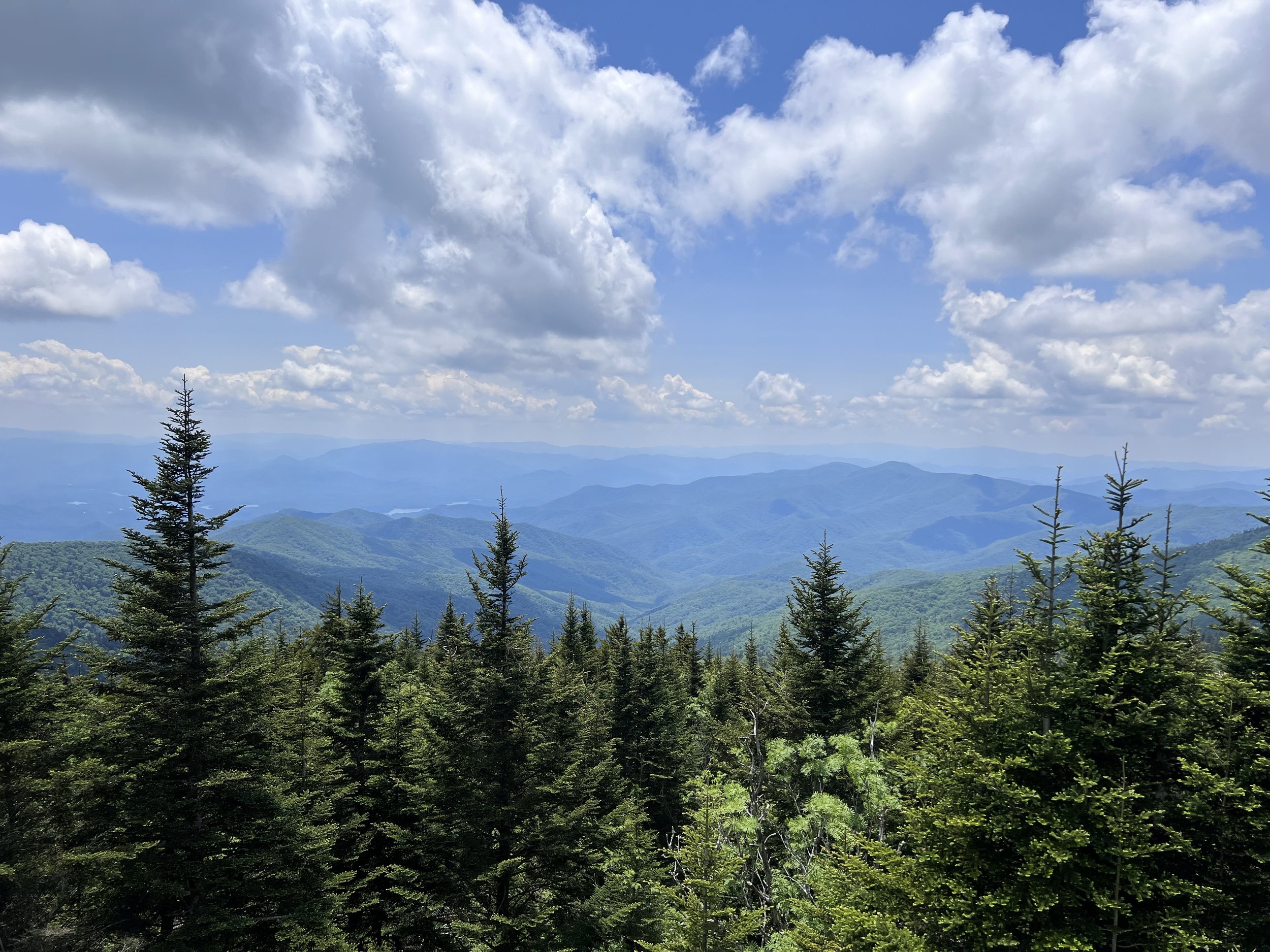
National Park Conservation Association, April 2024
Clearing the Air in the Smokies
Great Smoky Mountains National Park is starting to win in its decades-long fight against a dangerous haze, adding hope to the park’s horizon.
Scroll ↓
A fine mist hugs the earth, creating an ombre of green to gray to blue. The indigo ripples of land continue thereafter, undulating until they blend into the horizon. The sky swells above the mist in a crisp cobalt. Or so I imagined: I had seen the Smoky Mountains in advertisements and travel photography—on reprints on shirts, mugs, and socks long before I stepped foot into Great Smoky Mountains National Park.
But as I ventured into the national park for the first time in my late 20s in 2018, panting 331 feet up a half-mile paved path to reach the highest point at Clingmans Dome, I did not see the view I imagined. I looked out from my 6,643-foot perch on a concrete UFO-like deck and stare into a thick, dark cloud. We’re in a haze. “Guess that’s why they call it the Smoky Mountains,” I said to my partner.
Yet what I experienced wasn’t the “smoke” that gave the Smoky Mountains their name. Since the 1960s, people began to take note of a different kind of haze infiltrating the park—one fed by the fossil-fuel-burning industry, motor vehicles, and the airborne side effects of agriculture and development. In the park, ground-level ozone and fine particulate matter threaten human health. Sensitive plants like black cherry trees and cut-leaf coneflowers have shown signs of damage from ground-level ozone and have stopped thriving. Nitrogen and sulfur pollution have settled into the soil and have seeped into surrounding streams, diminishing water quality and harming aquatic species like brook trout.